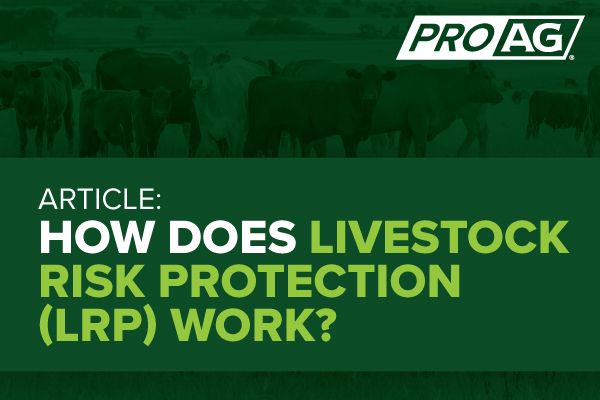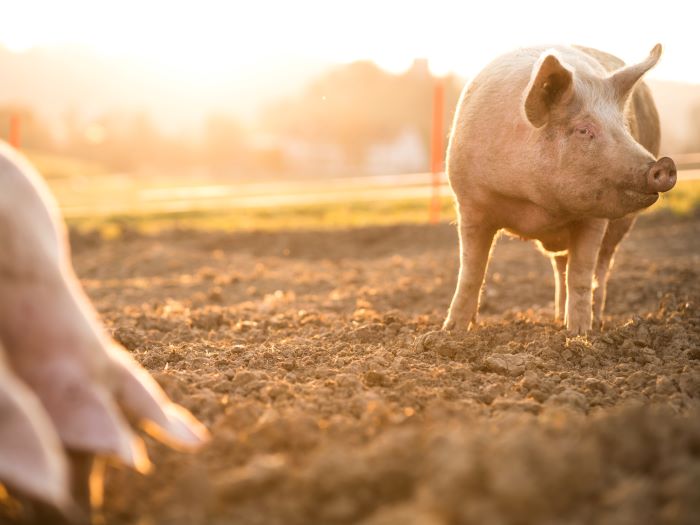Bagley Risk Management Solutions: Your Guard Versus Uncertainty
Bagley Risk Management Solutions: Your Guard Versus Uncertainty
Blog Article
Trick Factors to Consider When Choosing Livestock Risk Protection (LRP) Insurance
When examining options for Animals Threat Security (LRP) insurance policy, a number of crucial elements call for careful factor to consider to ensure efficient threat management in the farming sector. Selecting the right protection alternatives tailored to your particular animals procedure is critical, as is recognizing exactly how superior prices correlate with the level of security supplied.
Coverage Options
When taking into consideration Animals Threat Protection (LRP) insurance coverage, it is important to understand the different protection alternatives available to reduce risks in the farming field. Livestock Risk Protection (LRP) insurance coverage uses different insurance coverage alternatives customized to meet the diverse needs of livestock producers. Bagley Risk Management. One of the main insurance coverage alternatives is rate insurance coverage, which protects versus a decrease in market value. Producers can pick the coverage degree that straightens with their rate threat monitoring objectives, permitting them to guard their procedures versus possible economic losses.
An additional essential protection option is the recommendation duration, which identifies the length of time the insurance coverage is in result. Producers can select the recommendation period that ideal matches their production cycle and market conditions. In addition, protection levels and prices differ based upon the type of animals being insured, offering producers the flexibility to personalize their insurance coverage plans according to their certain requirements.
Recognizing the different insurance coverage choices available under Livestock Threat Security (LRP) insurance coverage is critical for producers to make enlightened decisions that properly safeguard their animals operations from market uncertainties.
Premium Costs

Livestock Danger Defense (LRP) insurance policy provides vital protection alternatives tailored to mitigate risks in the agricultural industry, with a considerable element to think about being the computation and structure of premium costs. When figuring out premium prices for LRP insurance policy, numerous aspects enter into play. These consist of the kind and variety of animals being guaranteed, the insurance coverage degree picked, the existing market rates, historic cost data, and the size of the insurance coverage duration. Insurers may also consider the location of the ranch, as geographical aspects can affect the general risk profile.
Insurance providers assess historic data on livestock costs and manufacturing costs to figure out an appropriate premium that shows the degree of threat entailed. It is important for livestock manufacturers to meticulously assess premium expenses and insurance coverage alternatives to guarantee they are properly secured versus possible financial losses due to damaging market problems or unforeseen events.
Eligible Livestock
The resolution of eligible livestock for Livestock Risk Protection (LRP) insurance policy coverage involves careful factor to consider of certain requirements and qualities. Livestock kinds that are normally eligible for LRP insurance coverage include feeder livestock, fed cattle, lambs, and swine.
Feeder livestock, for instance, are commonly eligible for LRP insurance coverage if click here to read they fall within defined weight arrays. Lambs are one more group of livestock that can be taken into consideration for LRP insurance policy, with elements such as weight and age playing a critical function in establishing their eligibility.
Before choosing LRP insurance policy for livestock, manufacturers ought to carefully examine the qualification criteria described by the insurance policy service provider to ensure their pets satisfy the required requirements for protection.
Plan Adaptability
Plan flexibility in Livestock Danger Security (LRP) insurance coverage permits producers to tailor coverage to fit their certain demands and take the chance of management techniques. This versatility encourages animals manufacturers to tailor their insurance plan based upon factors such as the type of livestock they own, market conditions, and private threat resistance degrees. One vital facet of plan adaptability in LRP insurance policy is the capability to pick insurance coverage degrees that line up with the producer's financial goals and risk direct exposure. Manufacturers can pick insurance coverage degrees that shield them versus possible losses because of changes in livestock rates, guaranteeing they are appropriately guaranteed without paying too much for unnecessary coverage. In addition, LRP insurance policy uses versatility in policy period, enabling producers to select insurance coverage durations that best fit their manufacturing cycles and advertising and marketing timelines. By using customizable options, LRP insurance policy makes it possible for producers to efficiently handle their risk direct exposure while securing their livestock procedures against unforeseen market volatility.
Claims Process
Upon experiencing a loss or damages, manufacturers can launch the claims process for their Animals Threat Protection (LRP) insurance coverage by without delay calling their insurance provider. It is essential for manufacturers to report the loss asap to expedite the insurance claims procedure. When getting to out to the insurance policy provider, producers will certainly require to offer in-depth info concerning the case, consisting of the day, nature visit this web-site of the loss, and any relevant paperwork such as veterinary documents or market costs.

After the analysis is complete, the insurance policy service provider will read what he said certainly make a decision pertaining to the claim and interact the end result to the producer. If the case is approved, the producer will certainly obtain settlement according to the terms of their Animals Threat Protection (LRP) insurance coverage plan. Bagley Risk Management. It is important for manufacturers to be acquainted with the insurance claims procedure to make certain a smooth experience in case of a loss

Final Thought
Finally, when picking Animals Danger Security (LRP) insurance coverage, it is vital to think about protection choices, premium costs, qualified animals, plan versatility, and the insurance claims process. These key elements will aid make certain that ranchers and farmers are properly safeguarded versus possible dangers and losses associated with their livestock procedures. Making a notified decision based upon these factors to consider can eventually lead to better economic protection and peace of mind for livestock manufacturers.
Livestock Risk Defense (LRP) insurance coverage offers various protection options customized to meet the varied requirements of livestock manufacturers.The determination of qualified livestock for Animals Danger Protection (LRP) insurance policy coverage includes careful factor to consider of certain criteria and features.Policy adaptability in Livestock Threat Security (LRP) insurance policy enables manufacturers to tailor insurance coverage to suit their particular needs and run the risk of monitoring methods.Upon experiencing a loss or damages, producers can launch the claims procedure for their Animals Risk Security (LRP) insurance by immediately calling their insurance policy company.In final thought, when selecting Animals Threat Protection (LRP) insurance coverage, it is crucial to think about protection alternatives, premium costs, eligible livestock, plan versatility, and the insurance claims procedure.
Report this page